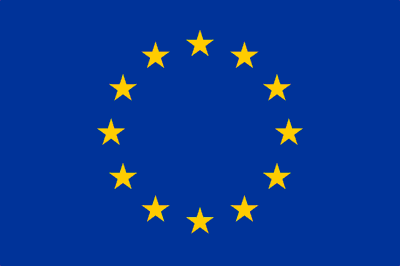1. lesson. History
1. lesson. History
1. Empires in Europe
The idea of international cooperation in Europe is rooted in ancient times. At the beginning of the first millennium, the Roman Empire had taken control over a broad area covering a large part of present-day Europe.
Following the 5th century, Charlemagne intended to recreate this structure in the 9th century when he founded the Holy Roman Empire.
Later t he farseeing Habsburg marriages brought Burgundy, Austria and Spain under a single ruler, Charles V .
In the 19th century nationalism grew into the creation of Austro-Hungarian Empire and unification of Germany and Italy. They together with the reformed Russia, France and the United Kingdom were regarded the “Great Powers of Europe”.
European leaders gradually “became convinced that the only way to establish a long-lasting period of peace in Europe was to unite their countries economically and politically”. Source: Wirthné Móricz Zsuzsanna : Introduction to the European Union. Székesfehérvár, KJF, 2004. 7.p.
2. The Way to Integration
In order to strengthen the se above-mentioned links, establishing a supranational body was proposed on 9 May 1950 by the French Foreign Minister - Robert Schuman. This body intended to integrate the coal and steel industries of Western Europe. Due to this proposal, in 1951 the European Coal and Steel Community (ECSC) was formed by six members: Belgium, France, West-Germany, Italy, Luxembourg and the Netherlands. The decision-making power about the coal and steel industries in the member countries was transferred to the hands of the ’High Authority’. Jean Monnet held its first presidency .The production of coal, manufacturing steel and trade in these tied the two leading economic powers - France and Germany – closely, and the success of these industries brought prosperity to all the participating countries. Consequently, the six member states decided to integrate other sectors of their economies as well.
In 1957 they signed the Treaties of Rome and created the European Atomic Energy Community (EURATOM) and the European Economic Community (EEC). The member states’ strong intention was to remove trade barriers between themselves and create a common market.
Institutional integration grew rapidly. In 1967 the institutions of the three European communities merged. At that time the members of the European Parliament were appointed by the national parliaments but as cooperation was becoming more extensive, in 1979, for the first time, the representatives were elected by direct universal suffrage . Since then the citizens of the member states have been allowed to vote for the candidate of their choice every five years.
The fall of economic barriers speeded up in 1968, when the member states removed customs duties on goods flowing across internal borders of the Community. They furthermore applied the same duties on their imports from third countries. Subsequently, internal and international trade grew rapidly.
The aim of the Single European Act (SEA), incorporated in 1986, was to complete the internal market by 1992. The SEA also opened the way to several institutional reforms giving more power to the European Parliament in respect of internal market legislation.
The Treaty of Maastricht (1992) introduced new forms of inter-governmental cooperation to the so-called community system - and created an economically and politically integrated European Union (EU). “It means that the member states have to take joint decisions on several matters. Consequently they have developed common policies in a very wide range of fields.” Source: http://www.europa.eu.int/abc/history/index_en.htm
The mission of the Treaty of Nice (in force since 1 February 2003) was to reform the institutions and the decision-making system so that the EU could function efficiently after its enlargement to 25 Member States. Now, that the Union comprises 27 members and it faces new challenges. On 13 December 2007 , the leaders of EU signed the Treaty of Lisbon . It calls for a more efficient, democratic and transparent Europe , functioning as an actor on the global stage . The Treaty lays down the values and rights of all the citizens. The Treaty is currently in the ratification process.

The flag of EU
3. Extensions
In 1973 waves of extension were launched. In that year the UK, Denmark and Ireland , later on in 1981 Greece , in 1986 Portugal and Spain joined the Community.
In 1989 the Berlin Wall fell and this event redrew the map of Europe. The communist regimes collapsed in the Eastern Bloc and the former East Germany merged into Germany and so into the European Community as well.
In 1996 three countries: Austria, Finland and Sweden gained accession. In 2004 a further ten countries were welcomed in Eastern and Southern Europe: Cyprus, Czech Republic, Estonia, Hungary, Latvia, Lithuania, Malta, Poland, Slovakia and Slovenia. Bulgaria and Romania followed them in 2007. Albania, Croatia and Turkey are also candidate countries and negotiations have started with the states of the West-Balkan.
Practice
1. Explain the meaning of the following words and expressions as they are used in the text!Unification, supranational, proposal, prosperity, to integrate, to merge, suffrage.
2. Make sentences of your own with each of these words and expressions!
Cooperation, empire, authority, community, representative, customs duty, decision, transparent.
3. Give a summary of each paragraph!